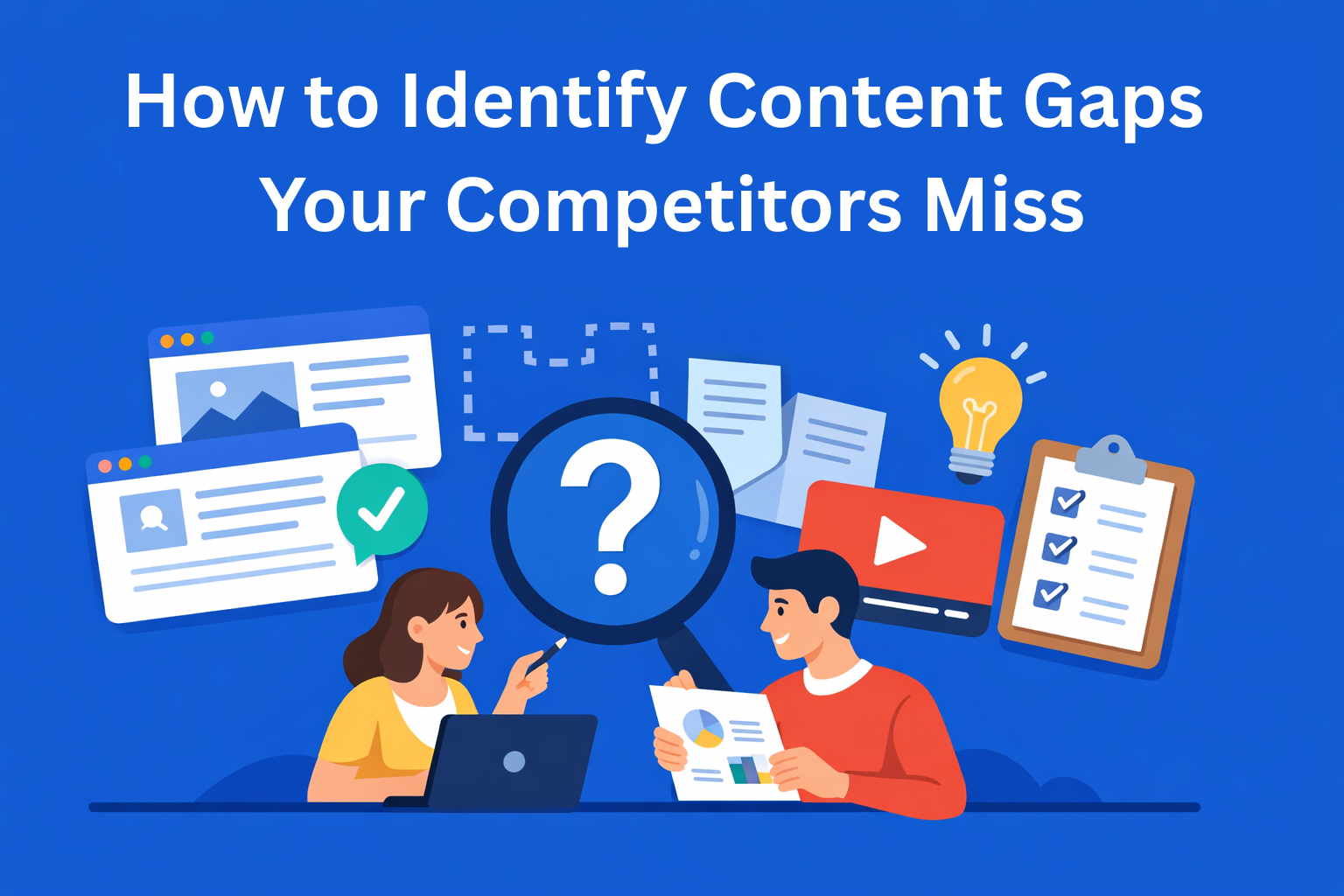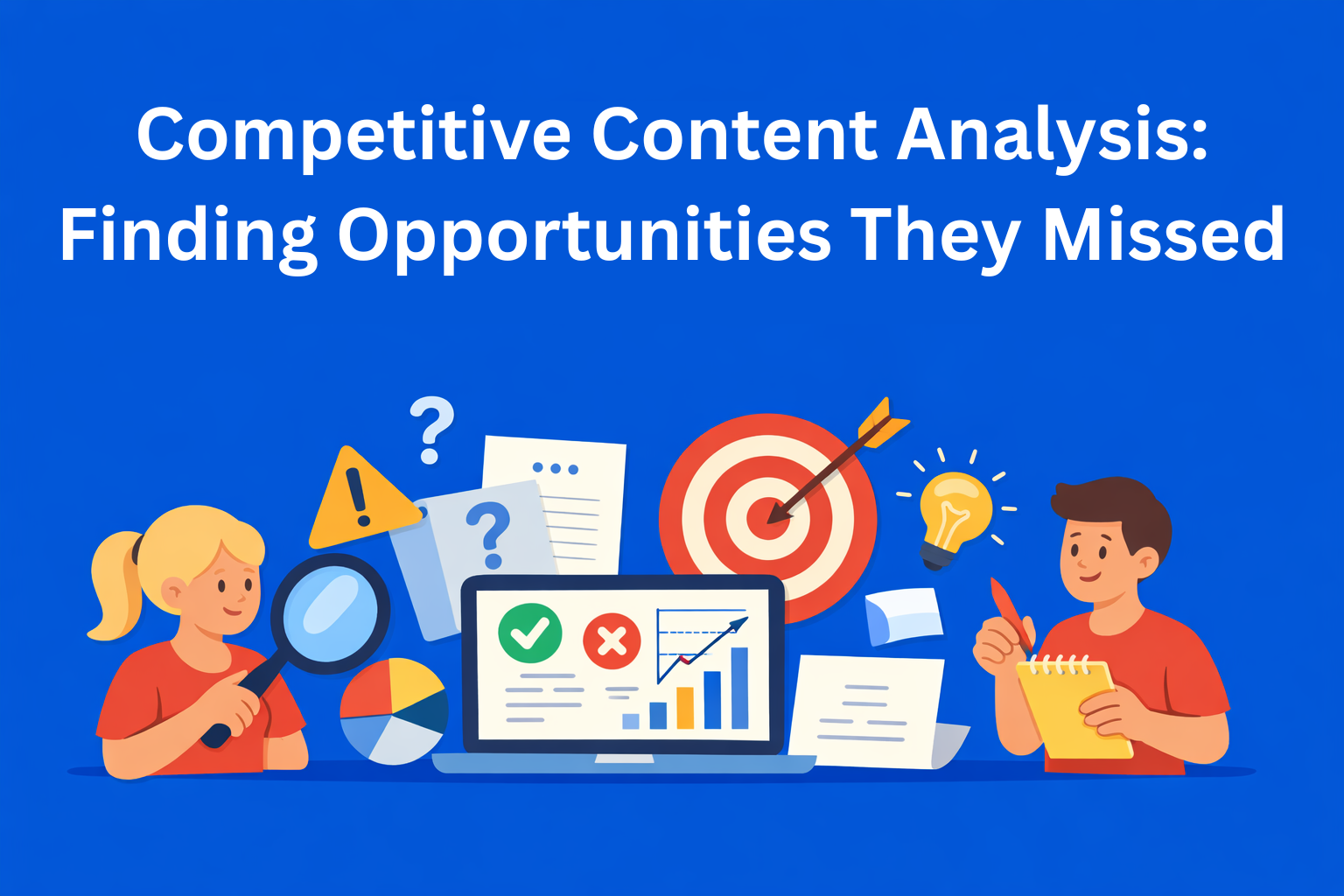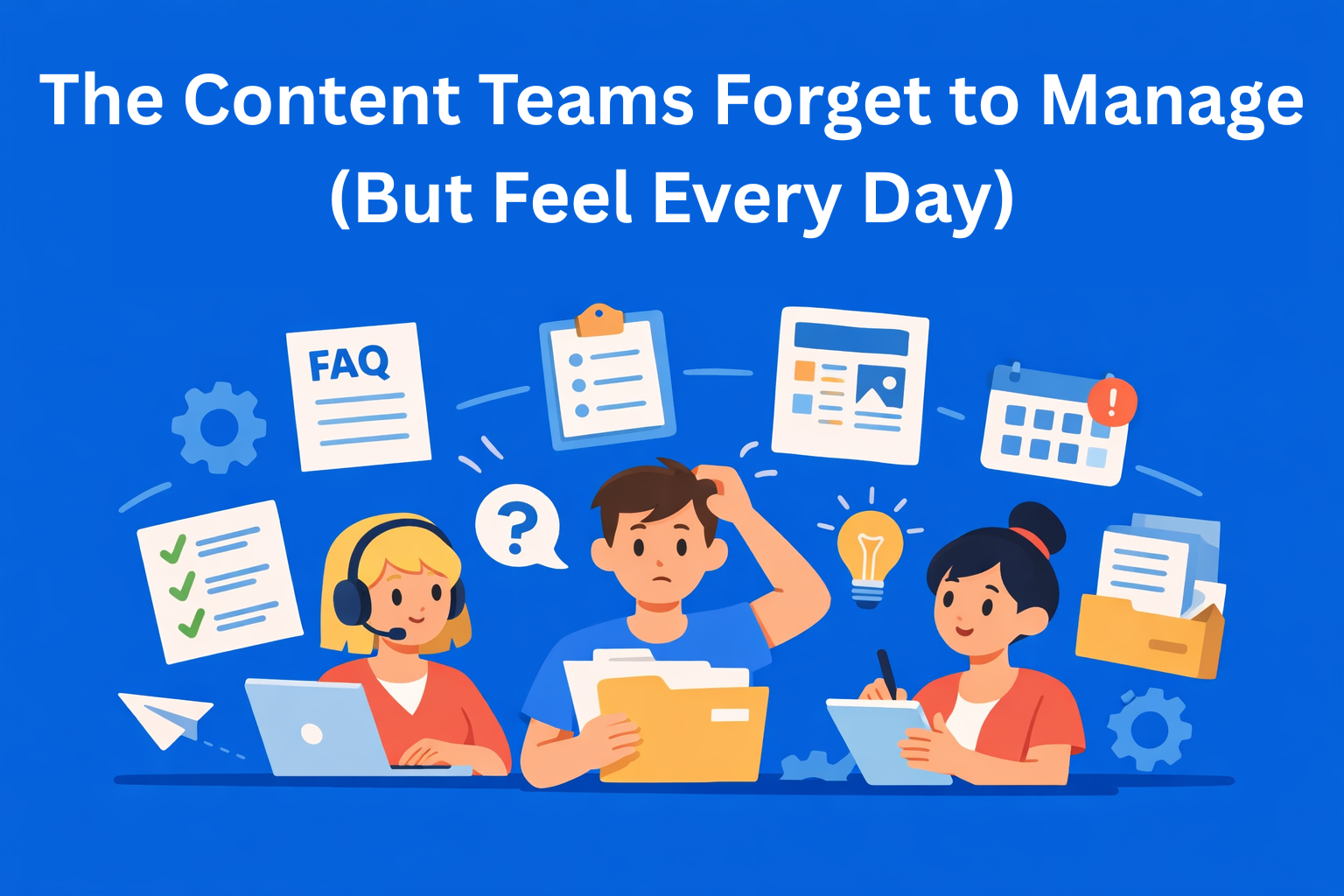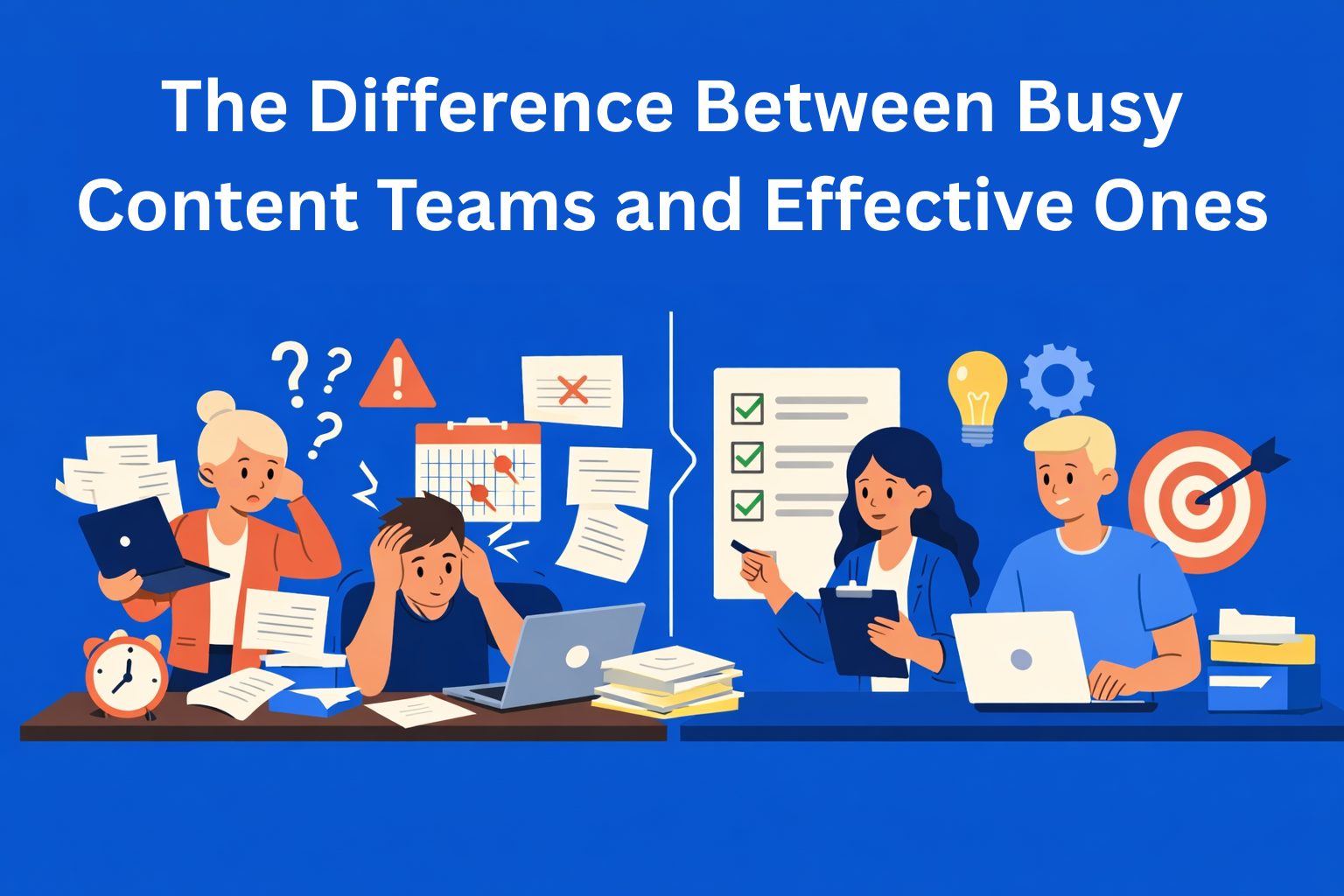Should Large and Small Content Teams Rely on AI the Same Way?
Learn why large and small content teams shouldn’t rely on AI in the same way. This simple guide explains how team size shapes AI workflows, what each team should automate, and how to use AI to work smarter, not harder.

Everyone is talking about how AI can speed up work, make content creation easier, and take care of many tasks for us. But should large and small teams use AI in the same way?
The short answer is no. In this blog, we'll break down how AI works in different environments, why team size changes the rules, and how to find the best way to make AI a natural part of your everyday workflow.
Key Takeaways
- Large and small teams shouldn’t rely on AI the same way - their goals, workflows, and limitations are completely different, so AI must play different roles.
- Large teams use AI for speed, consistency, and handling volume - but still protect creativity, strategy, and brand voice with strong human editing.
- Small teams use AI to fill skill gaps and work 3× faster - AI serves as extra hands for research, drafting, SEO, and visuals.
- Using AI the same way across all teams leads to mistakes - unnecessary automation, generic content, and processes that don’t fit the team's size.
- The best AI workflow is customized - define what AI should do, where humans step in, and set clear boundaries to maintain quality and authenticity.
Why Team Size Makes a Huge Difference
At first glance, it may seem like AI works the same for everyone, the tool is there, you turn it on, and use it. But in reality, things are very different. Large teams and small teams have different goals, work rhythms, structures, and levels of organization. Because of that, each of them uses AI for different reasons and gets different kinds of results.
Large teams have lots of people, lots of processes, and lots of content being produced. This also means a lot of repetitive tasks. That’s why these teams typically use AI to speed up production and maintain consistent quality.
On the other hand, small teams and startups don’t have the luxury of many people. Often one person covers several roles. Because of that, AI becomes an extra set of hands or a tool that fills skill gaps, for example, when no one on the team knows SEO or design.
Understanding this is important because it sets the foundation for everything else we discuss about AI tools and content team workflows.
How Large Teams Use AI
Large teams usually have a clear style, established procedures, and well‑defined steps in content creation. When AI enters that kind of system, it mainly serves as a tool that helps when something slows down or blocks part of the content creation process.
For example, if a team publishes dozens of articles every week, there are definitely many small, repetitive tasks: transcription, basic research, preparing the structure of a text, formatting, and more.
Because of that, large teams use AI for:
1) Efficiency
AI can quickly process large amounts of data, prepare early drafts, or create article structures. This saves time and speeds up the entire workflow.
2) Consistency
When multiple people write different texts, the style can vary. AI helps make everything look more unified, which is important for professional brands.
3) Handling Large Volume
Tasks that repeat and take too much time can be easily delegated to AI, for example, creating outlines, formatting articles, or basic data analysis.
The parts large teams usually don’t want to hand over to AI are the most creative and important ones. Structure can be automated, but the final touch, brand voice, strategy, and main ideas still stay with people.
This matters especially for big content marketing systems where a brand must always sound consistent, no matter who writes, because the audience expects a professional level of quality.
How Small Teams Use AI
Small teams work differently. They often have limited resources but lots of ideas and a fast pace. One person might manage social media, the blog, the newsletter, and SEO, and burn out quickly. That's why AI is the perfect tool to lighten the load.
Small teams typically use AI for:
1) Filling Skill Gaps
If no one on the team is an SEO expert, AI can help research keywords. If no one is a designer, AI can create basic visuals. If writing isn’t someone’s strength, AI can generate a first draft.
2) Speeding Up Content Creation
Instead of writing from scratch, a small team can start with an AI draft and refine it. This saves a lot of time and delivers faster results.
3) Research and Information Gathering
Instead of searching the internet for an hour, AI can provide key information in seconds.
In small teams, AI acts like a multiplier, it doesn’t replace a person, but helps them work three times faster. This is especially useful in AI content creation because it reduces pressure and speeds up publishing.
Still, small teams must be careful not to rely too heavily on AI, especially when it comes to their unique voice. Since small businesses are often building their identity from scratch, it’s important that their tone stays personal and clear.
Common Mistakes When Large and Small Teams Use AI the Same Way
If AI works well for a large company, it should work just as well for a small one, right? Not really. What works in a highly structured team may fail in a small one, and vice versa.
Here are a few common mistakes:
1) Automating Without Real Need
Sometimes teams introduce automation just because it exists, not because it solves a real problem. This creates extra steps that slow things down instead of speeding them up.
2) Copying Enterprise Workflows
Small teams sometimes try to use methods designed for large companies. This usually leads to problems because those methods are too complex and require more people and time than a small team can handle.
3) Giving AI Too Much Creative Control
AI is great for production, but it can’t replace personal style and real‑world experience.
4) Relying Too Much on Automation
Without human review, content can feel generic, especially in areas like content marketing.
How to Build an AI Workflow That Fits Your Team
There’s no universal approach. The key is to design an AI process that matches your type of work, goals, and team size.
Here’s a simple formula:
Step 1: Identify What Takes the Most Time
If it’s research, automate it. If it’s writing the first version, let AI step in. If it’s editing, AI can help organize and polish.
Step 2: Define AI’s Role
Do you want AI to help with basic tasks?
Do you want AI to handle technical work?
Do you need AI to clean up and simplify text?
The role should always be clear.
Step 3: Set Boundaries
Define what AI does, and what it doesn’t. For example:
- AI can create outlines, but not the final writing style.
- AI can prepare analysis, but not strategy.
- AI can generate ideas, but humans refine them.
Boundaries are key for maintaining quality.
Conclusion
When people talk about AI tools, they often think AI will replace humans or that everyone should use it the same way. But the truth is exactly the opposite: AI is powerful only when it’s adapted to your team, your size, and your goals.
So don’t try to copy someone else’s AI process. Instead, build your own, one that’s simple enough to match your workflow and smart enough to truly save you time.
Flexibility is the real power of artificial intelligence.






